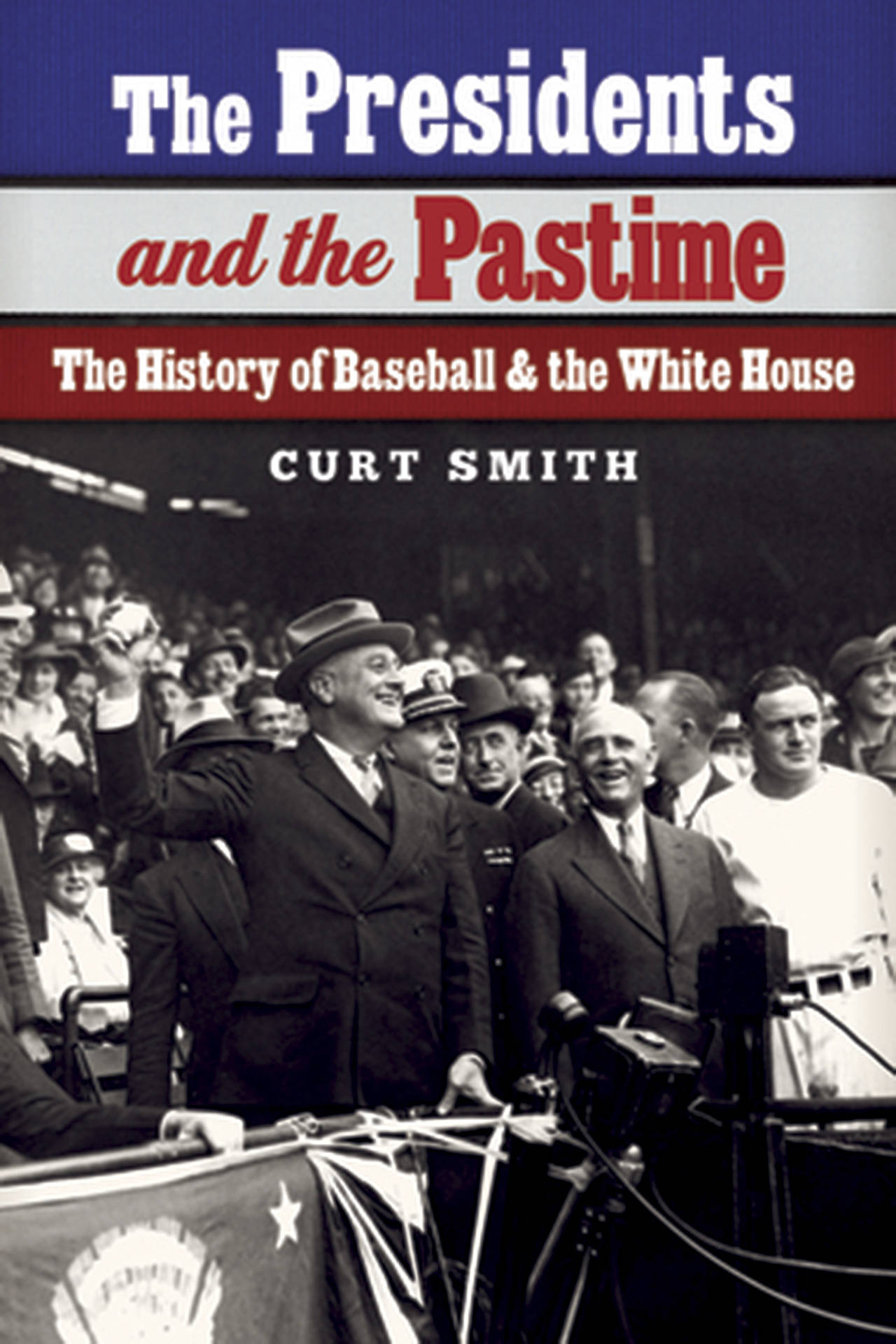“The Presidents and the Pastime: The history of baseball & the White House”
By Curt Smith, University of Nebraska, 504 pages, $29.95
Curt Smith, a former White House speechwriter, delves into the considerable relationship presidents have had with baseball, perhaps the most American of sports.
Smith takes a deep dive here, going back to when Abraham Lincoln played what was then known as “town ball.” He details how William Taft and Woodrow Wilson became the first presidents to truly embrace the sport by throwing out the first pitch at games.
He also chronicles several notable occasions where baseball and world events became intertwined. In World War II, Franklin Roosevelt called for Major League Baseball to continue to be played, maintaining it would be good for the country’s morale. After the 9/11 terrorist attacks, George W. Bush returned to Yankee Stadium to dramatically throw a perfect strike prior to Game 3 of the World Series. It was an uplifting and symbolic moment. Smith writes, “Slowly Bush left the field, Gary Cooper in High Noon, a hero more than he had ever been or ever would be again.”
Smith writes about Ronald Reagan’s relationship with the Cubs, dating back to when he used to re-create their games for a radio station in Des Moines in the 1930s. The White Sox received the presidential treatment from Barack Obama, who remained a big fan while in the White House. He even wore a White Sox jacket when he threw out the first pitch at the 2009 All-Star Game in St. Louis.
“I’m Keith Hernandez”
By Keith Hernandez, Little, Brown, 352 pages, $28
The title refers to the line Keith Hernandez used during his memorable guest appearance on “Seinfield,” but this memoir has nothing to do with the show, and really very little about the bulk of Hernandez’s impressive 17-year career with St. Louis and the New York Mets. Instead, he details his journey to reach and eventually gain a foothold in the big leagues.
The native of Northern California was a highly touted prospect when the Cardinals signed him out of high school in the early ’70s. However, Hernandez was far from an instant hit. Looking back, he contends his early struggles eventually laid the foundation for his future success. He writes, “I don’t want to gloss over the ‘hard’ years. They’re too important to me — to my love of baseball. Because after withstanding them, I could withstand anything.”
Indeed, it wasn’t easy. Off the field, he writes about his growing pains and mistakes, most the result of being so young. On the field, he reflects on trying to find that elusive confidence. Hernandez actually was sent back to the minors after failing in his first opportunity with the Cardinals. He was assisted along the way with support and advice from Hall of Famers such as Lou Brock, Bob Gibson and Pete Rose.
It all came together in 1979 for Hernandez when he won the batting title and was co-MVP in the National League. The book offers an interesting perspective of what it takes to be a success in baseball.
“A Course Called Scotland”
By Tom Coyne, Simon & Schuster, 336 pages, $27
In Tom Coyne’s previous book, “A Course Called Ireland,” he literally walked the entire perimeter of the country to play its famous links courses. So it was a natural that his sequel should be a book about golf in Scotland. However, there isn’t the same adventure in this book, since Coyne used more conventional forms of transportation to reach the courses. Still, the challenge is considerable, as Coyne writes about playing 111 rounds in 57 days.
His journey begins in England, as he chronicles his rounds at some of the great links courses there, a few of which are regular venues for the British Open. Then he makes his way to Scotland, where he details playing on the legendary tracks, such as St. Andrews, Turnberry and Carnoustie.
A strong player, Coyne sets a goal of getting enough links golf experience to conclude with playing in qualifying rounds for the British Open. Ultimately, Coyne says he is seeking greater meaning about golf and the hold, if not obsession, it has on him and other avid players. After all, what better place to find answers than in Scotland, considered to be “the home of golf.”
As in the Ireland book, Coyne has a wonderful way of making the reader feel a part of the quest. You experience his trials and tribulations as well as the sense of wonder and awe that comes with playing golf in Scotland.


